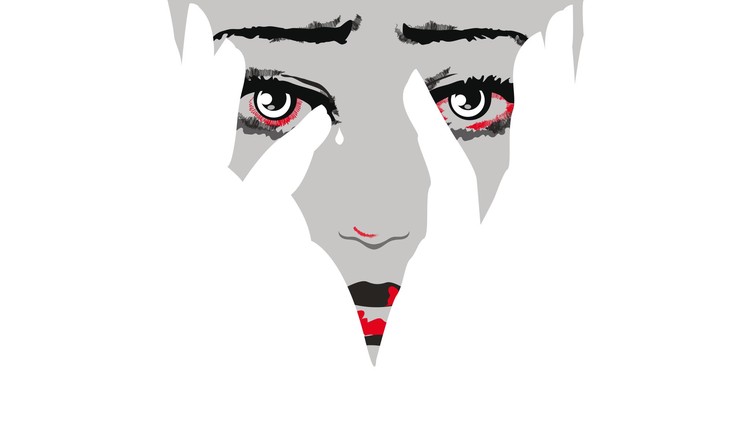One idea I’ve been intrigued by for awhile is the notion that psychosis can arise from attempts to heal dissociation.
Dissociation is all very ordered and structured. But it doesn’t allow a person to function as a whole. Trying to go from a really dissociated place, to putting things back together, can involve a loss of structure, which is “mad” or “psychotic” though also a step toward healing, if one can get through it successfully.
I read a blog post recently at http://www.pods-online.org.uk/notmadnotbad.html by Carolyn Spring on the “Positive Outcomes for Dissociative Survivors” website, here’s an excerpt from it that I think describes this step pretty clearly:
I had experiences throughout childhood of disorganised attachment and extreme trauma including child sexual abuse and torture. And all within a “standard middle-
class upbringing” where what happened on a night wasn’t alluded to during the day, where denial was my staple diet and where I was presented with ‘black’ and told that it was ‘white’. Despite all of that, my mind insisted on trying to reconcile these contradictions and never gave up the attempt to figure out what was really ‘true’. If my mind had just accepted that “this is the way it is”, that I really do deserve all this inhumane cruelty, that people who can be kind to you during the day can rape you at night, then I would be either dead by now or truly ‘mad’. But my mind has for nearly forty years insisted on navigating a healing path through this mishmash of paradox. In doing so, it’s had to exclude the ‘black’ so that it can focus just on the ‘white’ and survive a little longer. It’s had to exclude the cruelty so that it can focus on the kindness. It’s had to keep out of sight and out of mind many of the irreconcilable contradictions that daily life unfolded upon me. And that’s a large part of what dissociation is – keeping the ‘white’ separate from the ‘black’, the ‘good mummy’ separate from the ‘bad mummy’. It’s the definitive sign, I think, of sanity in an insane world. Ultimately, the greatest hope we have is that our minds do in fact want to reconcile the paradoxes and understand what went on. They want to figure out how the someone who ensures that you have smart, clean uniform for school can also allow you to be taken out to be raped by groups of adults. How does the mind reconcile that? With the flexibility of a mind-
in- progress, dissociation, splitting off, amnesia, is an obvious solution. Children just accept things the way they are. That’s one of the reasons, I believe, why many of us seemed so ‘normal’ at school. We were doing a form of mental gymnastics to twist into impossible shapes, and we could, because we were children, and that was how we survived. It’s when adulthood arrives with its need to form our own sense of self, of what we believe and who we are, of what ‘behaviour’ is right and normal, and there is no one around to tell us what to do, that the frameworks that we existed on during childhood break down. And we call it just that: a ‘breakdown’. For me in my early thirties, I was trying to figure out who I was and what I wanted in life. I was trying to learn how to parent and build a career, trying to negotiate and construct an adult-
to- adult relationship with my parents, trying to find somewhere to belong in this grown- up world that doesn’t give you after- school clubs and sports teams and the daily opportunity to make and break friends in an endless supply of peers. Adult life doesn’t so easily spell out to you the rules for what you need to do and when to do it by, and dictate your dress code, and organise your timetable and give you merit cards and detentions. You have to start figuring all that out for yourself. And with all the inherent, unknown contradictions in my mind of the mental maps that I had laid down up to that point in life, none of it made sense. It was at that point that the ‘logic’ of the world that I had lived in once and for all exploded and shattered around me and I ‘went mad’. But this ‘going mad’ wasn’t any form of insanity at all, no matter what diagnostic manuals may tell me. This ‘going mad’ was my mind beginning to make its own sense of the world for the first time, for itself, and lay out all the contradictions of the insanity of my childhood for me to unpick and comprehend. I could only do that by allowing myself, for the first time, to think and to remember. It was like a process of bringing out all the complicated bits of the jigsaw that just didn’t seem to fit into the picture at all and that I’d kept hidden away in the box because I couldn’t face the overwhelming sense of confusion that they evoked.
But, problematically, that act of allowing out the memories, the dissociative parts of the self that I had kept firmly in the box, brought with it a collapse of my previous coping strategies and my previous ‘logic’ for life. Things don’t work the way they used to. Life previously functioned a certain way, and then overnight, everything changes, and nothing is the same.
Carolyn is writing about her efforts to overcome dissociation as a result of childhood sexual abuse, but there are many sources of dissociation, including types I think that become embedded in a culture. Anyone who “brings out all the complicated bits of the jigsaw that just don’t seem to fit” may break down but also might possibly find a way to fit things together that usually don’t make sense.
Anyway, Carolyn’s whole article is worth reading.



